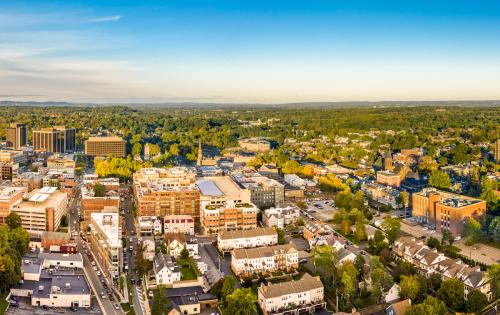Employer payrolls climbed faster in July than in any month since February, but households reported that fewer members were at work in July than in June. The mixed employment report reinforces the message from earlier reports that the economy continues to grow modestly. Since January labor market gains have been fast enough to keep pace with population growth, but not fast enough to put a dent in the nation’s unemployment rate. The number of unemployed and the unemployment rate were essentially the same in July as they were in January.
The employer survey offers a brighter picture of job gains than the household survey. Private sector employment grew for the 29th straight month in July. It increased 172,000, far faster than the rate of growth in the previous three months. Since January private payrolls have climbed 141,000 a month. A wide variety of industries saw job gains in July, including manufacturing, wholesale and retail trade, finance, professional and business services, and education and health. The temporary help services industry continued to add to payrolls in July. Since the start of the year, employment in the temporary help industry has climbed 6 percent.
There were two areas where job growth was conspicuously absent: construction and public-sector payrolls. Employment in the construction industry was essentially unchanged in July, but it has shrunk 33,000 since the start of the year. Since the end of the last economic expansion in December 2007 construction payrolls have fallen 1.98 million or more than 26%. It is hard to see evidence of a recovery. The unwillingness of households, companies, and the government to ramp up spending on new houses, business structures, and public infrastructure has meant that the construction industry is missing in action from the current recovery.
Public-sector employment declined in July. Since May 2010 government payrolls fell in 23 out of 26 months, falling a total of 1.07 million (4.7%). If government employment had remained steady rather than shrinking, the current unemployment rate would be 7.6% rather than 8.3%. Recent shrinkage of state and local public payrolls has occurred in spite of a recovery in state and local tax revenues. The continued weakness of government employment is thus at least partly the result of political hostility to maintaining the size of government.
The household survey offers a less encouraging picture of recent job market gains. Respondents to the survey reported that 195,000 fewer Americans were employed in July compared with June. Since January the household survey shows job gains that averaged 97,000 a month. This is approximately the number needed to keep the unemployment rate from rising, but it is too small to push the unemployment rate down. The household and employer surveys do not always agree on their estimate of the monthly job change. In July they did not even agree on the direction of change. Over longer time spans, however, the stories they tell are more similar. Employer payroll gains since January have averaged 131,000, about 34,000 a month faster than employment gains reported in the household survey. Neither estimate suggests we’ll see a return to full employment anytime soon. The job market recovery from the Great Recession has been and continues to be exceptionally weak.



Commentary
Employment Gains Keep Pace with Population Growth, but Leave Job Deficit Unchanged
August 3, 2012